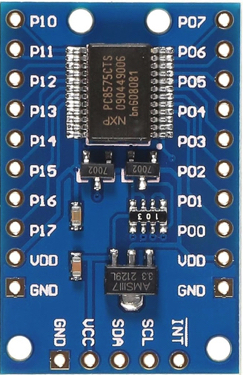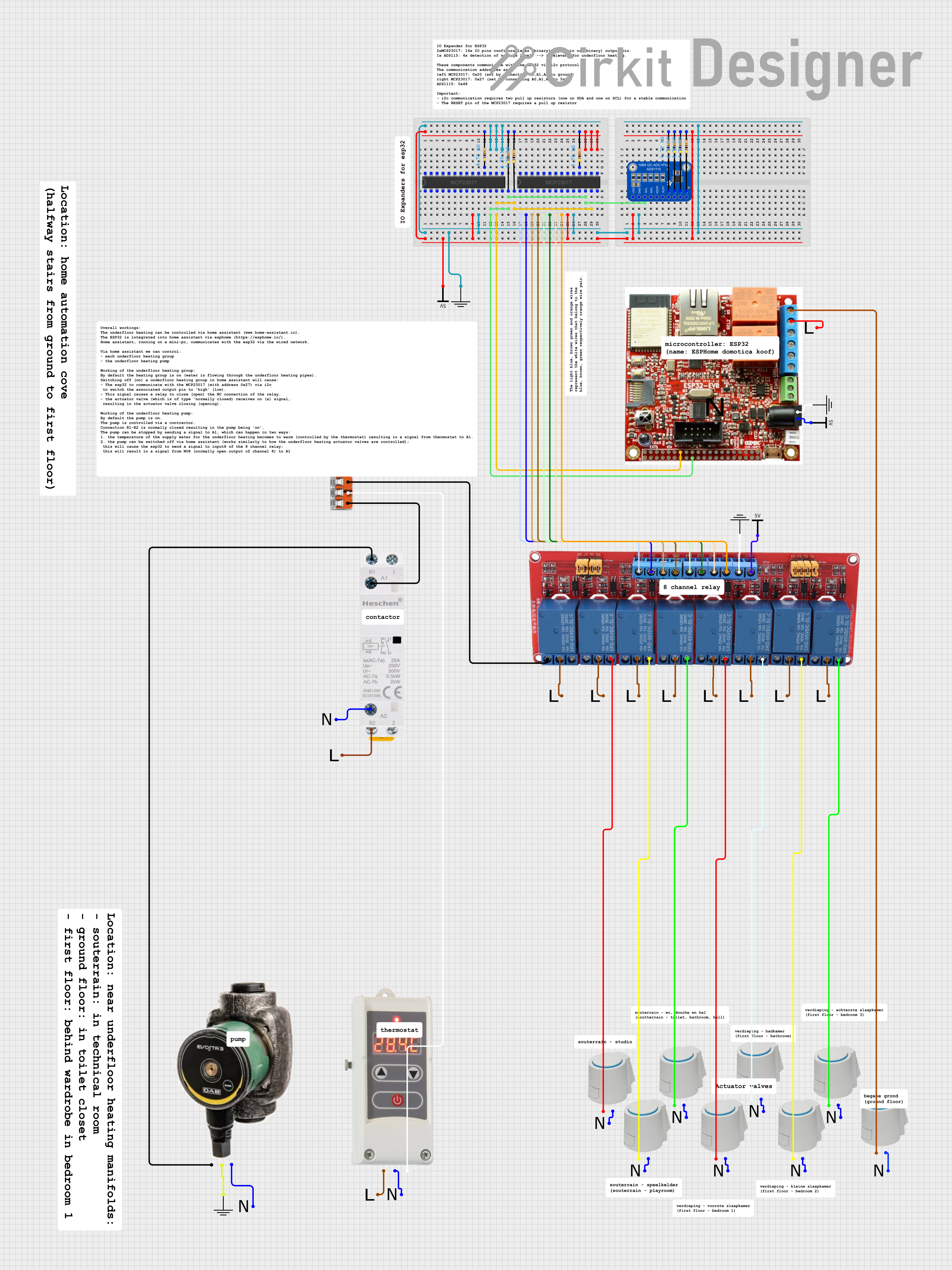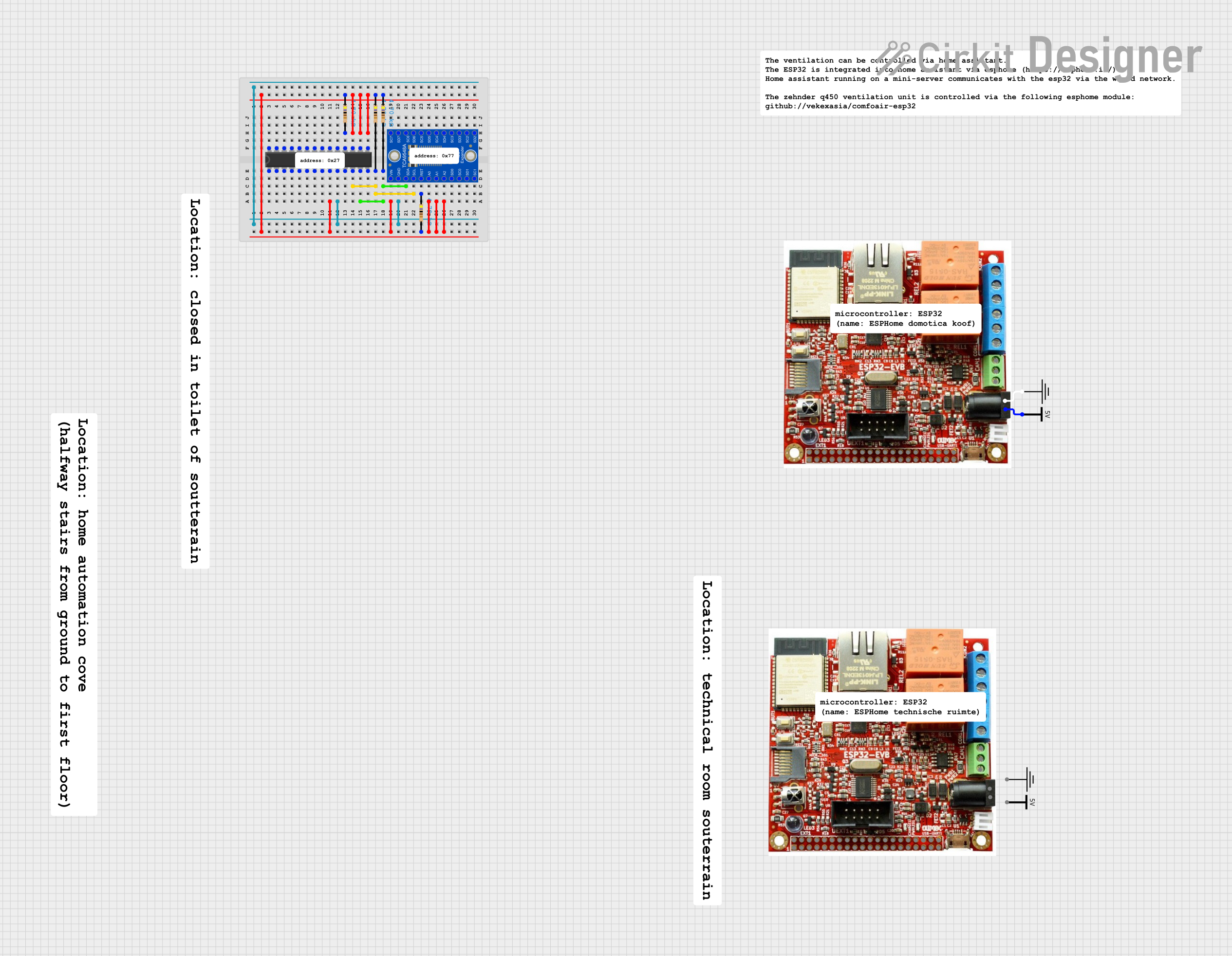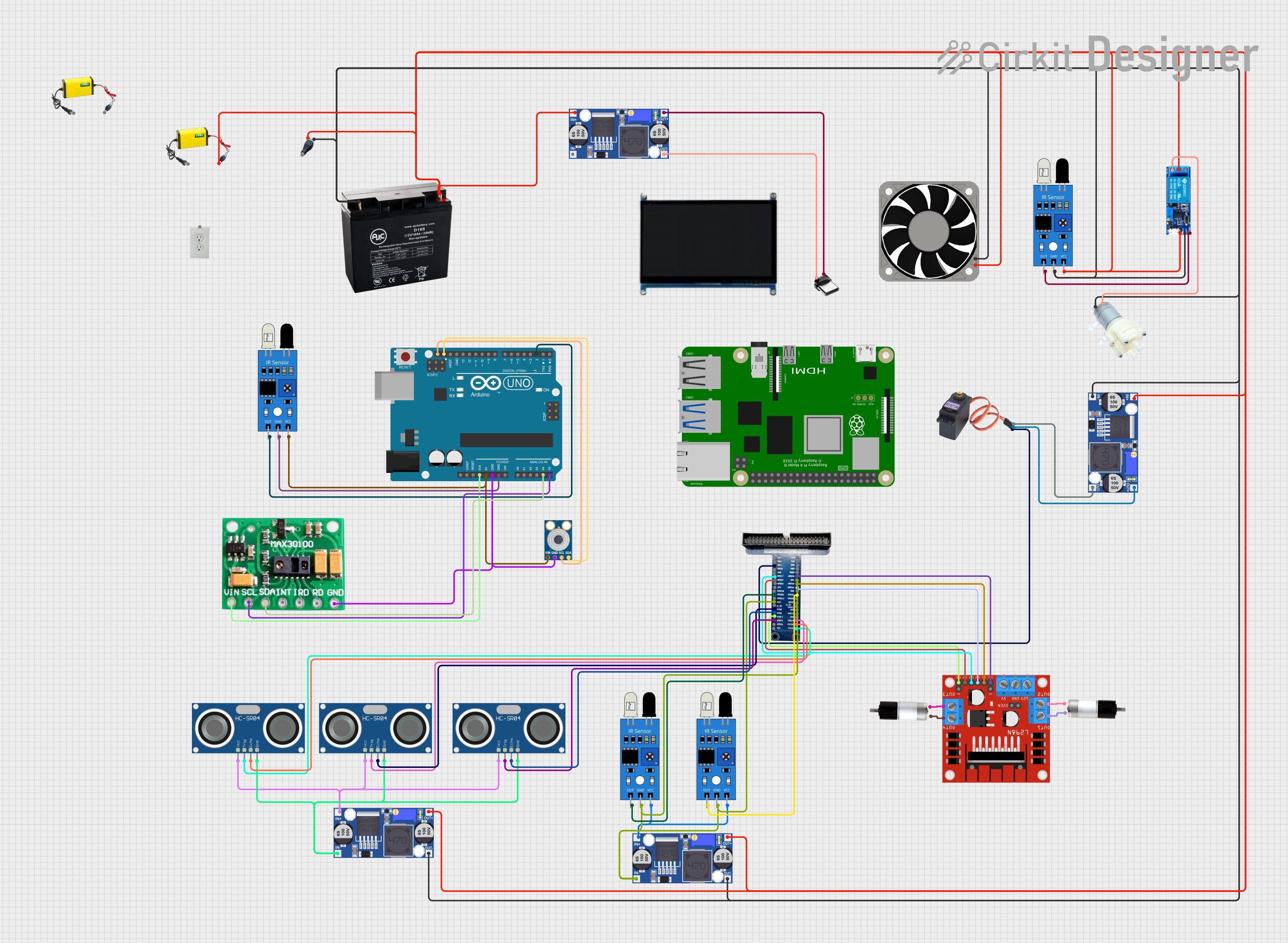
How to Use IO expander: Examples, Pinouts, and Specs

 Design with IO expander in Cirkit Designer
Design with IO expander in Cirkit DesignerIntroduction
The PCF8575 is a 16-bit I/O expander from Adafruit that provides additional digital input and output pins for microcontrollers with limited I/O capabilities. It communicates with the host microcontroller via the I2C bus, allowing for the control of up to 16 additional digital devices. Common applications include expanding the number of I/O pins on microcontrollers, such as the Arduino UNO, for use in projects that require multiple sensors, buttons, LEDs, or other digital devices.
Explore Projects Built with IO expander

 Open Project in Cirkit Designer
Open Project in Cirkit Designer
 Open Project in Cirkit Designer
Open Project in Cirkit Designer
 Open Project in Cirkit Designer
Open Project in Cirkit Designer
 Open Project in Cirkit Designer
Open Project in Cirkit DesignerExplore Projects Built with IO expander

 Open Project in Cirkit Designer
Open Project in Cirkit Designer
 Open Project in Cirkit Designer
Open Project in Cirkit Designer
 Open Project in Cirkit Designer
Open Project in Cirkit Designer
 Open Project in Cirkit Designer
Open Project in Cirkit DesignerTechnical Specifications
Key Technical Details
- Supply Voltage (Vcc): 2.5V to 5.5V
- I2C Bus Voltage: 5V tolerant
- Output Current per I/O pin: 25 mA
- Total Output Current: 400 mA
- Input Leakage Current: ±1 µA (max)
- Operating Temperature Range: -40°C to +85°C
Pin Configuration and Descriptions
| Pin Number | Pin Name | Description |
|---|---|---|
| 1 | A0 | Address pin 0, used to set the I2C address |
| 2 | A1 | Address pin 1, used to set the I2C address |
| 3 | A2 | Address pin 2, used to set the I2C address |
| 4 | P0 | I/O port 0 |
| 5 | P1 | I/O port 1 |
| ... | ... | ... |
| 19 | P16 | I/O port 16 |
| 20 | Vss | Ground (0V) |
| 21 | SDA | I2C Data Line |
| 22 | SCL | I2C Clock Line |
| 23 | INT | Interrupt Output (active low) |
| 24 | Vcc | Supply Voltage |
Usage Instructions
Connecting to a Microcontroller
- Connect Vcc to the microcontroller's 5V power output.
- Connect Vss to the microcontroller's ground.
- Connect SDA and SCL to the microcontroller's I2C data and clock pins respectively.
- Use pull-up resistors on the SDA and SCL lines if they are not already present on the microcontroller board.
- Set the A0, A1, and A2 pins to either high or low to establish a unique I2C address if multiple I2C devices are used.
Programming with Arduino UNO
Here is an example code snippet for initializing the PCF8575 and toggling all pins:
#include <Wire.h>
// PCF8575 I2C address is 0x20(32) if A0, A1, and A2 are connected to GND
#define PCF8575_ADDRESS 0x20
void setup() {
Wire.begin(); // Initialize I2C communications as Master
}
void loop() {
// Write all pins high
Wire.beginTransmission(PCF8575_ADDRESS);
Wire.write(0xFF); // Low byte
Wire.write(0xFF); // High byte
Wire.endTransmission();
delay(1000);
// Write all pins low
Wire.beginTransmission(PCF8575_ADDRESS);
Wire.write(0x00); // Low byte
Wire.write(0x00); // High byte
Wire.endTransmission();
delay(1000);
}
Important Considerations and Best Practices
- Ensure that the I2C address of the PCF8575 does not conflict with other I2C devices on the bus.
- Use appropriate pull-up resistors on the I2C lines (typically 4.7kΩ to 10kΩ).
- Avoid exceeding the maximum current ratings for each I/O pin and the total output current.
- Consider using the interrupt pin (INT) to detect input changes without polling the device.
Troubleshooting and FAQs
Common Issues
- I2C Communication Failure: Check connections, ensure pull-up resistors are installed, and verify that there are no address conflicts.
- Unexpected Behavior on I/O Pins: Ensure that the pins are properly configured as inputs or outputs in your code.
Solutions and Tips for Troubleshooting
- Use I2C scanner code to confirm the PCF8575 is detected on the I2C bus.
- Check the power supply voltage and ground connections.
- Use a multimeter to verify the logic levels on the I2C lines.
FAQs
Q: Can I use the PCF8575 with a 3.3V microcontroller? A: Yes, the PCF8575 is compatible with 3.3V logic levels, but ensure that the I2C bus voltage matches the microcontroller's logic level.
Q: How many PCF8575 expanders can I connect to a single I2C bus? A: You can connect up to 8 PCF8575 devices on a single I2C bus by configuring the A0, A1, and A2 pins for different addresses.
Q: What is the purpose of the interrupt pin? A: The interrupt pin can be used to alert the microcontroller when an input state has changed, allowing for more efficient monitoring of the I/O pins.
This documentation provides a comprehensive guide to using the Adafruit PCF8575 I/O expander. For further assistance, consult the manufacturer's datasheet and technical support resources.